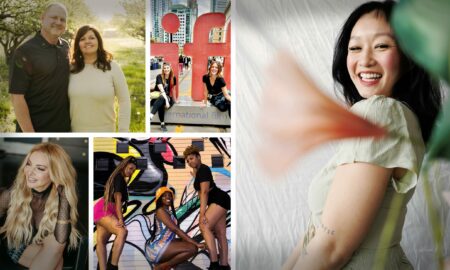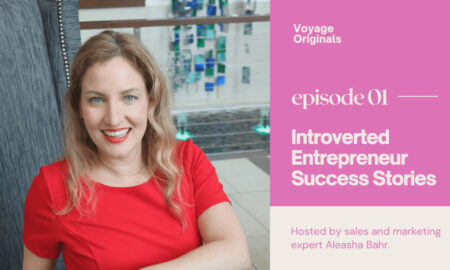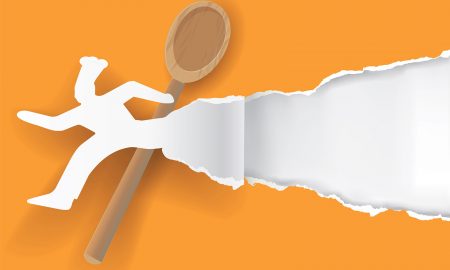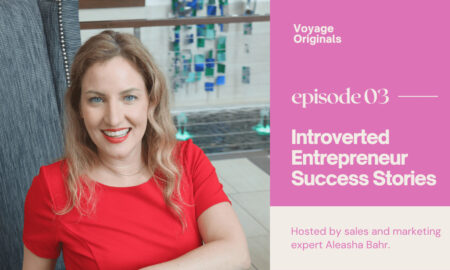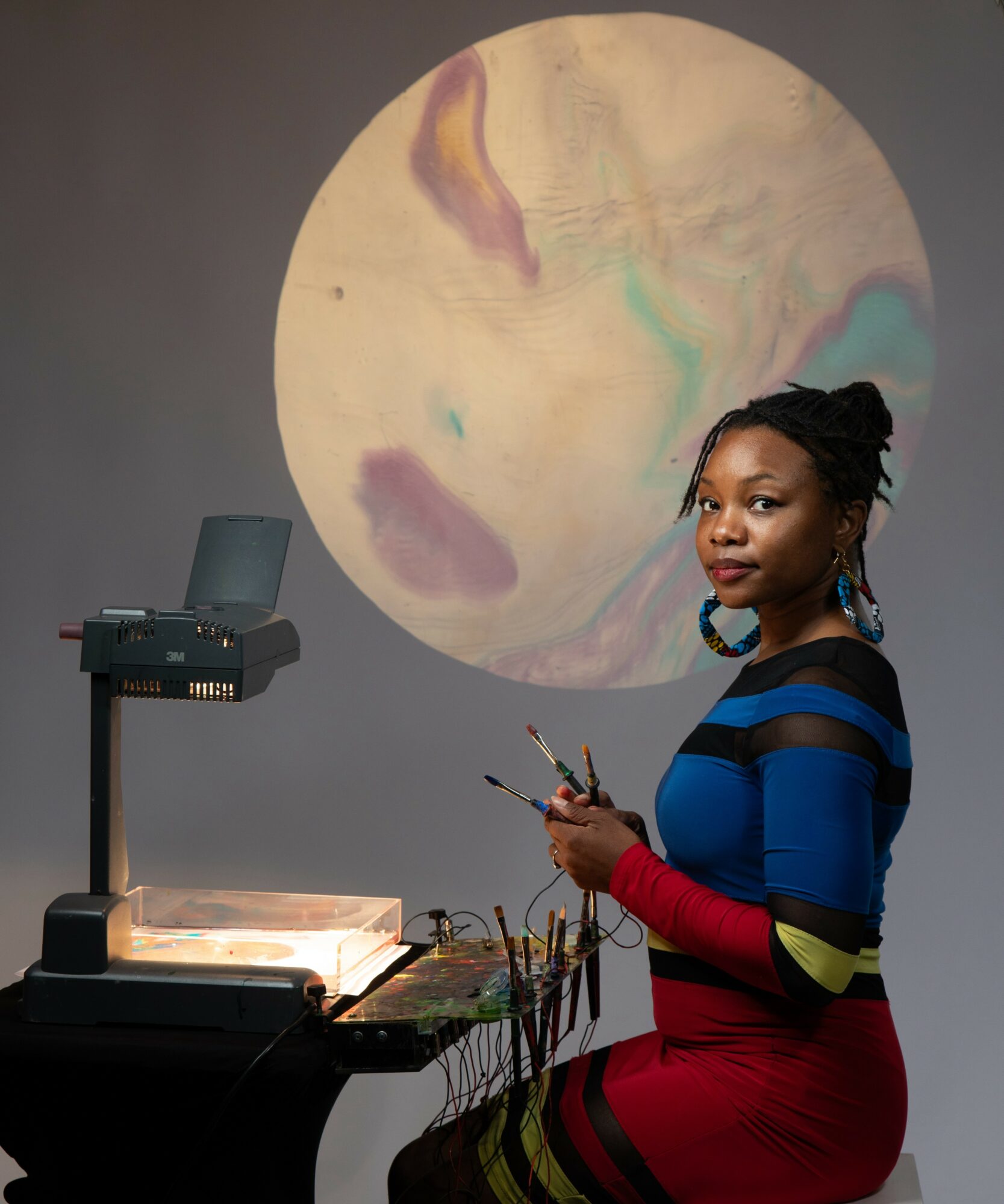

Today we’d like to introduce you to Camry Ivory.
Hi Camry, we’re thrilled to have a chance to learn your story today. So, before we get into specifics, maybe you can briefly walk us through how you got to where you are today?
I’m an audiovisual artist, musician, and the inventor of Coloratura—a one-of-a-kind instrument that uses electrically wired paintbrushes to create physical art and digital music at the same time. I use Coloratura in live performances, selling the resulting artworks and compositions, and host interactive workshops in schools, libraries, corporate retreats, fundraisers, parties, and even the occasional wedding.
I’ve been a “traditional” musician (pianist and singer-songwriter) for most of my life, and the idea for Coloratura emerged about ten years ago. I had just learned about synesthesia, a neurological phenomenon that crosses sensory neurons, causing some people see music or hear colors. I don’t have synesthesia myself, but I was fascinated by the concept, and a wild thought struck me: what if I could replicate the experience of synesthesia with technology? What if I could use musical paintbrushes to create visual art and sound together? I assumed something like this already existed, but after months of scouring the internet, I found nothing that resembled what I envisioned. So I had another wild idea: What if I made it myself?
With support from Art in the Loop, a Kansas City visual and performing arts initiative, I transformed a rough sketch into a fully functional prototype in under two months. I thought it would be a one-time performance, but after my first show in 2015, I was instantly met with a flurry of questions from the audience: “What is this? How does it work? Can I try it? Will you bring this to my classroom/block party/law office?” So what started as a one-off project eventually evolved into a thriving creative practice.
I’ve had incredible opportunities to share Coloratura with a wide range of Kansas City institutions and organizations, including Hallmark, the Nelson-Atkins Museum, Lyric Opera of Kansas City, and the Kansas State School for the Blind. Those experiences have led to more invitations across the country and, most recently, abroad. Last November, I presented Coloratura internationally for the first time at the University of Greenwich’s Sound/Image Festival in London.
Most of these opportunities have come through word of mouth. I’ve never had a formal marketing strategy or SEO plan, and my social media presence is rather minimalist. I don’t always feel ready to put Coloratura out into the world, but regardless of how I feel, the world feels ready for me! People regularly reach out to me about performances and workshops, and they’re often referred by folks I’ve never met. Maybe their child attended an in-school workshop and came home beaming about the experience. Maybe a friend posted a video of my performance on social media. Regardless of how they found me, I’m grateful for every opportunity that has come my way.
Although I originally designed Coloratura for my own creative use, I find the most joy in sharing it with others through interactive workshops. I work hard to create a supportive, judgment-free space where people feel empowered to create. I believe everyone is inherently creative, regardless of their age or artistic background. Sometimes, all they need is the right invitation.
Can you talk to us a bit about the challenges and lessons you’ve learned along the way. Looking back would you say it’s been easy or smooth in retrospect?
People often assume I have a background in visual art or engineering, but fun fact: I have neither! I studied linguistics and higher education administration in college, and I’ve spent my entire non-artistic career working with college access and scholarship programs. I’m proud to be a self-taught artist and coder, but that lack of formal training comes with challenges. Though my husband’s previous experience working with electronics helped immensely, there was no manual or step-by-step tutorial to guide us through building a device that had never existed. We relied heavily on trial and error and lots of experimentation. Some of our greatest breakthroughs have come late at night when we’ve exhausted all of our traditional options and one of us says “Ok, this is a wild idea, but what if we try….”. Whether that idea results in an expensive mistake or a game-changing revelation, we always learn something new from the experience that informs future work.
Every component of Coloratura had to be customized, which meant lots of awkward (and funny) conversations with manufacturers when I reached out for support: “Wait, you want to put paint on our electronics?!” or “Why are you sticking wires into our paintbrushes?!” Once I explained the project, most were intrigued and eager to help.
Even after we successfully built Coloratura, learning how to perform with it was another hurdle. I always joke that “there’s no Van Gogh or Van Halen of musical paintbrushes”: There’s no role model or guidebook for combining visual art, music, and tech in this way. I often find myself floating in a liminal space between art, music and technology, and the strategies that work in one discipline don’t always work in the other. But I’ve found brilliant, supportive mentors across disciplines to help me bridge the gaps: innovative visual artists, experimental musicians, and curious tech enthusiasts. None of them can map my exact path, but each serves a compass to help me move in the right direction.
There’s no template for what I’m doing, which is challenging, but also thrilling. I’m constantly asking new questions, following unexpected threads, and learning on the fly, which, in a way, is the most fulfilling creative process I can imagine.
Thanks for sharing that. So, maybe next you can tell us a bit more about your work?
Both my creative practice and my business model are pretty unconventional. I perform live shows in both arts and music venues, and sell the artwork I create during performances, as well as pieces I create in my studio. The most unique aspect of my artwork is I record every session while I’m creating; each piece that I exhibit or cell sold comes with a QR code linking to a recording of the piece, so you can actually hear what the painting sounds like as it comes to life. I’ve recently started experimenting with jewelry and scarves that use an embedded chip instead of a QR code to access the video, to offer a more tactile and personal way to display my art and access the videos.
Outside of performing, most of my time and energy is spent facilitating workshops. Some are are more open-ended and playful, designed to help people explore their creativity without the burden of pressure or perfectionism. Other workshops are more structured and educational. In school and library settings, I often incorporate Coloratura in a STEM/STEAM curricula to show how technology and engineering can be used in imaginative, artistic ways.
I also collaborate with music and art therapists, as well as professionals who work with individuals who are neurodivergent or have disabilities, to create customized workshops that are accessible and engaging to the communities they serve. Right now, I’m especially focused on finding ways to create more versions of Coloratura that can be used independently. Currently, the devices I use are the only ones that exist, but I’m working towards creating more modular, durable, easy-to-use versions of Coloratura that can be used in classrooms, clinics, and community centers.
Alright, so to wrap up, is there anything else you’d like to share with us?
Three important things I’ve learned during this process:
1) Cultivate Curiosity and Humility
If I had known how hard it would be to take Coloratura from an idea to reality, I probably never would’ve started! But the traits that helped me succeed were curiosity, tenacity and humility. Once I started this project, I was fascinated with exploring all the future possibilities, stubborn enough to troubleshoot my way through through obstacles, and humble enough (and brave enough) to ask for help when my challenges exceeded my level of expertise.
2) Let Your Vision Evolve
Initially, I was fiercely protective of my original vision for Coloratura. I wanted it to be seen as a professional instrument for my own personal creative practice, not a novelty or a toy. I didn’t consider hosting workshops for this reason. But once I accepted my first invitation to bring Coloratura to an elementary school, my whole perspective changed. I found so much joy in sparking students’ curiosity about technology, creativity and innovation and[ I loved to watch their fears and inhibitions melt away as they became more immersed in the experience. The best compliment I’ve ever received was from a teacher who said “I’ve never seen my students so well-behaved. Some kids who can’t even sit next to each other in class without fighting were sharing paintbrushes and creating together.”
I’ve received similarly heartwarming feedback from adults who, after attending a workshop, decided to start painting, either for the first time ever, or after a decades long absence. So even though I created Coloratura because I’m a curious nerd with a tendency to hyperfixate on wild ideas, I’ve stuck with it because I realize the incredible power it has to motivate and inspire people of all ages and abilities.
3) Failure Is a Part of the Process
In the first few years of Coloratura, any major technical issue or awkward performance I had would send me spiraling. I felt actual, physical pain when I had a big failure, and that fear of failure almost made me abandon the project entirely.
Over time, my fear evolved into curiosity. Instead of thinking, “I never want to perform/host a workshop again because I’m afraid of this disastrous failure”, I learned to change my mindset to “I want to perform/host a workshop again AND how can I prevent this disastrous failure?”. I learned that not only is failure an inevitable part of the creative process, it’s also immensely valuable: many of my failures have led me to innovative ideas that I never would’ve considered had my initial plan succeeded. I turn every potential loss into a lesson and it’s made me a stronger person. And, to be honest, what seems catastrophic to me is usually imperceptible to most people; they rarely notice or care about my hiccups and snafus, they’re just excited to see and try something new.
And if someone ever does notice and has something rude to say about it, I’d challenge them to do better; I have a 10-year head start!
Contact Info:
- Website: http://www.coloratura-art.com
- Instagram: https://www.instagram.com/coloratura.art
- Youtube: https://www.youtube.com/@Coloratura-art


